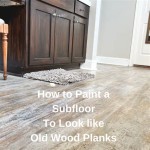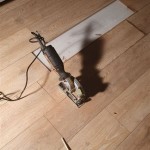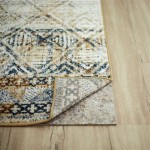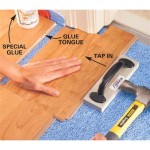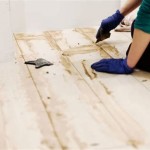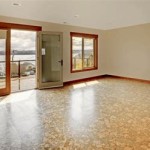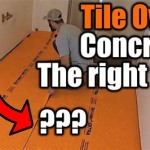Can You Use Carpet Tape on Wood Floors? A Comprehensive Guide
The question of whether carpet tape can be safely and effectively used on wood floors is a common concern for homeowners and renters alike. The desire to secure rugs and prevent slipping hazards is understandable, but the potential for damage to the wood floor underneath necessitates a careful consideration of the risks and alternatives. Carpet tape, designed to adhere to both the rug backing and the subfloor, can present challenges when applied to wood surfaces due to the adhesive properties and the potential for residue, discoloration, and even finish damage.
This article delves into the intricacies of using carpet tape on wood floors, exploring the types of carpet tape, the potential risks involved, methods for safe application and removal, and alternative solutions that minimize the chances of damaging the floor. Understanding these factors is crucial for making an informed decision and preserving the integrity and appearance of your wood flooring.
Understanding Different Types of Carpet Tape
Carpet tape is not a monolithic product; it comes in various strengths and formulations, each designed for different applications and flooring types. Choosing the correct type of tape is paramount when considering its use on wood floors. Failing to do so can significantly increase the risk of damage during application or removal.
Double-sided carpet tape is the most common type, featuring adhesive on both sides of a carrier material. This type is designed to secure rugs to the underlying surface. Within the category of double-sided tape, there are various strengths, ranging from light-duty tapes for temporary applications to heavy-duty tapes designed for permanent installations. For wood floors, a lighter-duty tape is generally preferable to minimize the risk of adhesive residue and finish damage.
Removable carpet tape, as the name suggests, is formulated to be easily removed without leaving residue. However, even removable tapes can still cause damage if applied incorrectly or left in place for an extended period. It is crucial to test its removal capabilities in an inconspicuous area before applying it to the entire rug.
Specialty carpet tapes are designed for specific applications, such as securing carpet to stairs or adhering carpet to concrete. These tapes typically have very strong adhesive properties and are generally not suitable for use on wood floors due to the high risk of damage.
When selecting carpet tape for wood floors, it is essential to carefully read the product description and instructions. Look for tapes specifically labeled as "safe for wood floors" or "removable." It is also advisable to consult with a flooring professional or hardware store employee for recommendations on appropriate tape types.
Potential Risks of Using Carpet Tape on Wood Floors
While carpet tape may seem like a convenient solution for securing rugs, its use on wood floors carries several potential risks. These risks stem from the adhesive properties of the tape and the interaction between the adhesive and the wood floor finish. Understanding these risks is crucial for making an informed decision about whether to use carpet tape and, if so, how to minimize the chances of damage.
Adhesive residue is one of the most common problems associated with using carpet tape on wood floors. The adhesive can bond strongly to the floor finish, leaving behind a sticky residue when the tape is removed. This residue can be difficult to clean and may require specialized cleaning products or even professional assistance. In some cases, the residue may permanently alter the appearance of the floor.
Finish damage is another significant concern. The adhesive can pull up the floor finish upon removal, resulting in discoloration, peeling, or even complete removal of the finish layer. This type of damage can be costly to repair and may require refinishing the entire floor.
Discoloration can occur when the adhesive reacts with the floor finish or when the tape blocks UV light from reaching the covered area. Over time, this can lead to a noticeable difference in color between the area covered by the tape and the surrounding areas.
Damage to the wood itself is a less common but still possible risk. If the tape is applied to a poorly sealed or damaged area of the floor, the adhesive can penetrate the wood fibers, making removal extremely difficult and potentially causing permanent damage. This is especially true for softer wood types like pine.
The risk of damage is influenced by several factors, including the type of tape used, the type of floor finish, the length of time the tape is left in place, and the method used for removal. Minimizing these risks requires careful planning and execution.
Safe Application and Removal Techniques
If the decision is made to use carpet tape on wood floors, employing safe application and removal techniques is essential to minimize the potential for damage. These techniques involve careful preparation, proper application methods, and patient removal strategies.
Preparation is key. Before applying carpet tape, thoroughly clean the wood floor surface to remove any dust, dirt, or debris. Use a mild cleaner specifically designed for wood floors and allow the floor to dry completely before applying the tape. This will help ensure a clean bond and minimize the risk of residue.
Test the tape in an inconspicuous area before applying it to the entire rug. Choose a small, hidden area of the floor, such as under furniture or in a closet. Apply a small piece of tape and leave it in place for a few days. Then, carefully remove the tape and check for any signs of residue or damage. If residue or damage is present, consider using a different type of tape or an alternative solution.
Apply the tape sparingly. Use only the amount of tape necessary to secure the rug. Avoid applying tape to the entire perimeter of the rug, as this can increase the risk of damage. Instead, apply short strips of tape at strategic points around the rug's edges.
When removing carpet tape, patience is paramount. Do not attempt to rip the tape off quickly, as this can increase the risk of pulling up the floor finish. Instead, slowly and carefully peel the tape off at a shallow angle. If the tape is difficult to remove, try using a hair dryer to gently heat the adhesive. The heat will soften the adhesive and make it easier to peel off.
If adhesive residue remains, use a residue remover specifically designed for wood floors. Follow the product instructions carefully and test the remover in an inconspicuous area before applying it to the entire area. Avoid using harsh chemicals or abrasive cleaners, as these can damage the floor finish.
Alternatives to Carpet Tape for Securing Rugs
Given the potential risks associated with using carpet tape on wood floors, exploring alternative solutions for securing rugs is often a prudent course of action. Several alternatives are available that can effectively prevent rugs from slipping without causing damage to the floor.
Rug pads are a popular and effective alternative to carpet tape. Rug pads are thin, cushioned mats that are placed under the rug to provide grip and prevent slipping. They come in various materials and thicknesses, and can be cut to fit any size rug. Rug pads are generally safe for wood floors and can even help protect the floor from scratches and wear.
Non-slip rug grippers are another option. These are small, adhesive-backed pads that are attached to the corners or edges of the rug. They provide a secure grip on the floor and prevent the rug from slipping or bunching up. Non-slip rug grippers are typically easier to install and remove than carpet tape and are less likely to leave residue.
Silicone caulk can be used in some cases to create a non-slip surface. Apply a thin bead of silicone caulk to the back of the rug in a grid pattern. Allow the caulk to dry completely before placing the rug on the floor. The silicone will create a rubbery surface that provides grip and prevents slipping. It is crucial to use a clear silicone caulk that is specifically designed for use on wood floors.
Furniture placement can also help secure rugs. Placing heavy furniture, such as sofas or chairs, on the edges of the rug can help hold it in place and prevent slipping. This is a simple and effective solution for rugs that are partially covered by furniture.
Choosing the right alternative depends on the type of rug, the location of the rug, and the desired level of security. Rug pads are generally the most versatile and effective option, while non-slip rug grippers and silicone caulk may be suitable for smaller rugs or rugs in low-traffic areas. Careful consideration of these factors will help determine the best solution for securing rugs while protecting the wood floor.

Pros And Cons Of Applying Rug Tape On Your Floors Carpets Rugpadusa

Easy Ways To Get Rid Of Carpet Tape On Wooden Floors Or Stairs Floor Sanding

Downsides That May Make You Reconsider Using Rug Tape On Wood Floors

Types Features And Specific Uses Of Carpet Tape

Will Double Sided Carpet Tape Damage My Hardwood Floor Tile By All Flooring Now

Types Features And Specific Uses Of Carpet Tape

How To Keep Area Rugs From Sliding Using Carpet Tape Double Sided

How To Remove Double Sided Carpet Tape Hometalk

Safetypro 2 Pack Double Sided Carpet Tape Rug Grippers For Area Rugs Pad And Hardwood Floors Heavy Duty Stickers Grip With Strong

Double Sided Carpet Tape For Area Rugs High Adhesive And Removable Over Or
See Also
